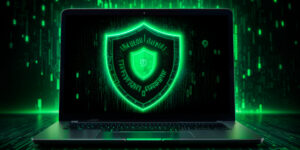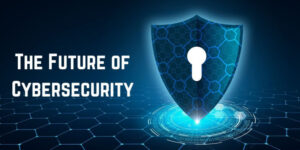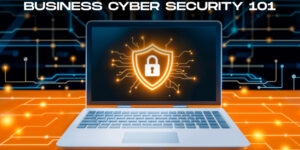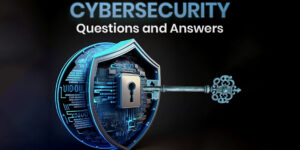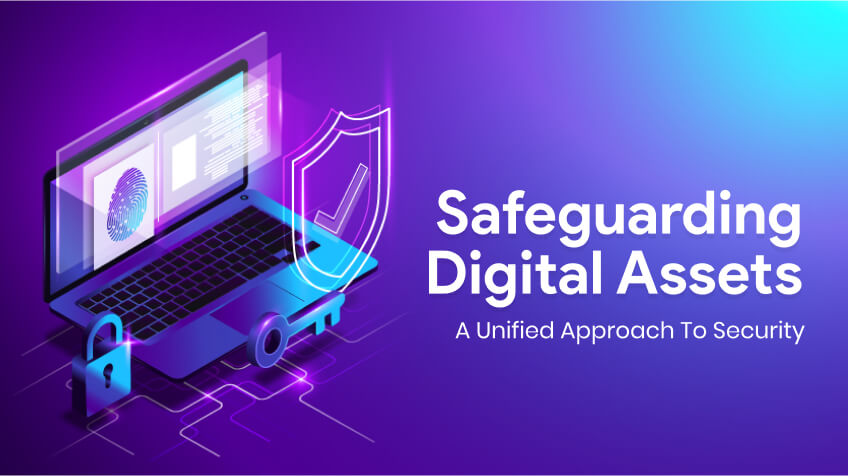
Personal information, financial records, and intellectual property require robust protection. Recognizing the limitations of fragmented security approaches, organizations increasingly adopt a unified strategy to combat cyber threats efficiently. The unified approach to security includes risk assessment, security policies, employee training, access controls, encryption, threat detection, and incident response planning.
Breaking down barriers between departments and making sure everyone knows about security helps companies lower risks and keep digital stuff safe, making sure it’s kept private, accurate, and available in today’s connected world. With the increasing number of threats, using one big plan for security is key to making sure our digital things stay protected, as discussed below.
What Are Digital Assets?
Digital assets are important electronic information for people and businesses, like personal data, ideas, and online money. It’s important to protect digital assets from unauthorized access or changes while ensuring we can still use them when needed.
Prioritizing confidentiality, integrity, and availability helps minimize the potential consequences of cyber threats, like financial loss and reputational damage. Taking proactive steps, such as using encryption and setting up access controls, makes our digital stuff more secure. This helps ensure that our valuable information stays safe in today’s connected digital world.
Artificial intelligence, or AI in cybersecurity, plays a crucial role in safeguarding digital assets against evolving threats. By leveraging artificial intelligence algorithms, cybersecurity systems can analyze vast amounts of data. This helps detect anomalies, identify potential risks, and respond to incidents in real time.
The Evolving Threat Landscape

From sophisticated hacking techniques to social engineering attacks, cyber threats continuously evolve in complexity and scale. Moreover, the increasing interconnectedness of devices through the Internet of Things (IoT) further expands the attack surface, making digital assets more vulnerable than ever before.
Cyberattacks come in various forms, including malware infections, phishing scams, ransomware attacks, and insider threats. These attacks can target individuals, businesses, government agencies, and critical infrastructure, with the potential to cause widespread disruption and damage. As such, protecting digital assets requires a proactive and comprehensive approach to security.
The Need for a Unified Approach
Traditionally, organizations have employed disparate security measures for protecting digital assets, such as firewalls, antivirus software, and intrusion detection systems. While these measures are effective to some extent, they often operate in silos, lacking integration and coordination. This fragmented approach can leave gaps in security defences, allowing attackers to exploit vulnerabilities and bypass traditional safeguards.
An unified approach to security seeks to address these shortcomings by integrating various security technologies and practices into a cohesive framework. This approach in protecting digital assets involves aligning security policies, processes, and technologies to create a holistic defense strategy that encompasses prevention, detection, and response capabilities. By unifying security efforts, organizations can better mitigate risks and strengthen their overall security posture.
Key Components of a Unified Security Strategy
A unified security strategy comprises several key components, each playing a critical role in protecting digital assets effectively. These components include:
➪ Risk Assessment
First step for protecting digital assets, is to identify and catalogue all digital assets within the organization. This includes hardware (such as servers, computers, and networking equipment), software (applications, operating systems), data (sensitive information, intellectual property), and employee skills and knowledge.
Next, organizations need to identify potential threats that could cause harm to the identified assets. Threats come from malicious actors (hackers, insiders), natural disasters, technical failures, and human error.
➪ Security Policies
Establishing clear and comprehensive security policies that outline acceptable use guidelines, access controls, data protection measures, and incident response procedures. These policies serve as a foundation for implementing security controls and guiding employee behavior.
➪ Security Awareness Training

Educating employees about common cyber threats, security best practices, and their responsibilities in protecting digital assets. Security awareness training helps employees recognize and mitigate security risks, minimizing the likelihood of human error leading to security incidents.
Implementing security awareness training involves assessing training needs, developing customized content, and delivering training through various methods. Training sessions incorporate simulated exercises and measure effectiveness. Employees can seek feedback for improvement and secure executive support to integrate the most effective security measures with existing policies. This ensures employees are educated about cyber threats, best practices and their roles in safeguarding digital assets, reducing the likelihood of security incidents due to human error.
➪ Access Controls
Implementing robust access controls to limit privileged access to sensitive data and systems. This includes user authentication mechanisms, role-based access control (RBAC), and least privilege principles to ensure that users have authorized access only to the resources necessary to perform their job functions.
➪ Encryption
Encryption technologies protect data at rest, in transit, and while in use. Encryption safeguards sensitive information from interception by encrypting it using cryptographic algorithms, making it unreadable without the appropriate decryption key.
Digital signatures are cryptographic techniques used to verify the authenticity of digital messages or documents. They are often implemented using asymmetric encryption, where the sender digitally signs the message with their private key. The recipient verifies it using the sender’s public key.
➪ Threat Detection and Response
Deploying advanced threat detection capabilities like endpoint detection and response (EDR) tools. These technologies help detect and respond to security incidents in real-time, minimizing the impact of cyberattacks.
➪ Incident Response Planning
Incident response planning is vital for organizations to manage security breaches effectively. It ensures a timely and structured response, minimizing damage and maintaining business continuity. Compliance requirements, evidence preservation, and reputation management further underscore its importance. Regular review and improvement of plans are essential for ongoing resilience and learning.
Developing and maintaining incident response plans that outline the steps to take in case of a security breach. These plans should include procedures for containing the incident, mitigating damage, conducting forensic analysis, and restoring normal operations.
Conclusion
Digital assets are constantly under threat from cyberattacks. Hence, a unified approach to security is essential to protect digital assets effectively. By integrating various security technologies and practices into a cohesive framework, organizations can better mitigate risks, detect threats, and respond to cyber security incidents promptly. From risk assessment to incident response planning, every aspect of security plays a crucial role in protecting digital assets and preserving their confidentiality, integrity, and availability.


